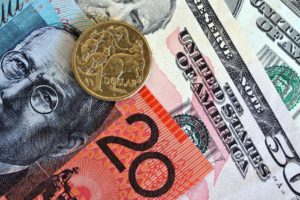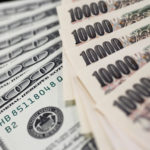 Australian dollar distanced from lows unseen in 3.5 years against its US counterpart on Monday, as Chinese Gross Domestic Product was reported to have exceeded experts forecasts during the last quarter of 2013.
Australian dollar distanced from lows unseen in 3.5 years against its US counterpart on Monday, as Chinese Gross Domestic Product was reported to have exceeded experts forecasts during the last quarter of 2013.
AUD/USD touched a daily high at 0.8804 at 2:00 GMT, after which consolidation followed at 0.8792, rising 0.14% for the day. Support was likely to be received at July 22nd 2010 low, 0.8738, while resistance was to be met at January 17th high, 0.8828.
According to data by the Chinese National Bureau of Statistics, nations Gross Domestic Product expanded 7.7% during the fourth quarter of 2013 compared to the same period a year ago, after economy expanded 7.8% in Q3. Reuters and Wall Street Journal had projected that economic growth will slow down to 7.6% in Q4. This figure came as a result of lower investment activity. Chinas economic growth has curbed its pace after June last year, as lending in the country weakened. The report provided a boost to Australian dollars demand, as China is Australias largest export market.
“Leading into the data, the market was clearly short the Aussie,” said Jonathan Cavenagh, a Singapore-based foreign-exchange strategist at Westpac Banking Corp, stressing on bets the Australian dollar would fall, cited by Bloomberg. “Given the Chinese data was not as bad as what some in the market were fearing, then we’ve seen a subsequent position squeeze.”
Traders saw a 46% probability that Reserve Bank of Australia will probably further reduce its record-low 2.50% benchmark interest rate by the policy meeting on July 1st, according to swaps data compiled by Bloomberg News. On Friday the odds of such a move were 44%.
The yield on Australian 10-year government bonds reached 4.08%, after falling to as low as 4.07% earlier, or the lowest point since November 1st.
Meanwhile, on Friday a survey by the University of Michigan and Thomson Reuters showed that consumers in the United States lost a bit of their optimism in early January, as households with low and medium income trimmed their financial expectations. The preliminary reading of the corresponding index of consumer confidence slowed down to 80.4 in January from a final reading of 82.5 in late December. Experts had projected that the index will demonstrate an advance to 83.5 during the current month.
At the same time, industrial production in the country rose 0.3% in December on a monthly basis, in line with expectations, supported by overall recovery in manufacturing and mining sectors. On annual basis, industrial output expanded 3.7% in December, or 0.9% higher than the peak registered before recession. November’s result has been revised down to a 1.0% increase from 1.1% gain previously. In October and September, however, nation’s industrial production has been moderately revised up.
Elsewhere, the Aussie was higher against the euro, as EUR/AUD cross dropped 0.12% on a daily basis to trade at 1.5406 at 8:03 GMT. AUD/NZD pair was gaining 0.44% to trade at 1.0676 at 8:03 GMT. Traders are almost certain that Reserve Bank of New Zealand will raise its benchmark interest rate from the current level of 2.50% by July.
The annualized index of consumer prices in New Zealand probably climbed to 1.5% during the last quarter of 2013, according to the median estimate of experts, after annualized consumer inflation was 1.4% during the third quarter.





